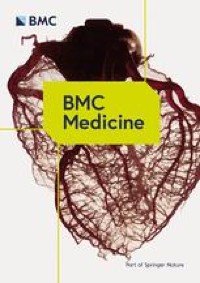
Vowles KE, McEntee ML, Julnes PS, Frohe T, Ney JP, van der Goes DN. Rates of opioid misuse, abuse, and addiction in chronic pain: a systematic review and data synthesis. Pain. 2015;156(4):569–76.
Makary MA, Overton HN, Wang P. Overprescribing is major contributor to opioid crisis. BMJ. 2017;359:j4792.
Hirschfeld DJ. Trump Declares Opioid Crisis a ‘Health Emergency’ Requests no Funds The New York Times; 2017.
Hollmann MW, Rathmell JP, Lirk P. Optimal postoperative pain management: redefining the role for opioids. Lancet. 2019;393(10180):1483–5.
Silva BM, Rodrigues JJ, de la Torre DI, Lopez-Coronado M, Saleem K. Mobile-health: A review of current state in 2015. J Biomed Inform. 2015;56:265–72.
Bhavnani SP, Narula J, Sengupta PP. Mobile technology and the digitization of healthcare. Eur Heart J. 2016;37(18):1428–38.
Brummett CM, Waljee JF, Goesling J, Moser S, Lin P, Englesbe MJ, et al. New Persistent Opioid Use After Minor and Major Surgical Procedures in US Adults. JAMA Surg. 2017;152(6):e170504.
Hamnvik OR, Alford DP, Ryan CT, Hardesty IT, Drazen JM. NEJM Knowledge+ Pain Management and Opioids – A New Adaptive Learning Module. N Engl J Med. 2019;380(16):1576–7.
Babu KM, Brent J, Juurlink DN. Prevention of Opioid Overdose. N Engl J Med. 2019;380(23):2246–55.
Colloca L, Barsky AJ. Placebo and Nocebo Effects. N Engl J Med. 2020;382(6):554–61.
Benedetti F. Placebo analgesia. Neurol Sci. 2006;27(2):100–2.
Colloca L, Lopiano L, Lanotte M, Benedetti F. Overt versus covert treatment for pain, anxiety, and Parkinson’s disease. Lancet Neurol. 2004;3(11):679–84.
Hack TF, Degner LF, Parker PA, Team SC. The communication goals and needs of cancer patients: a review. Psychooncology. 2005;14(10):831–47.
Del Re AC, Fluckiger C, Horvath AO, Symonds D, Wampold BE. Therapist effects in the therapeutic alliance-outcome relationship: a restricted-maximum likelihood meta-analysis. Clin Psychol Rev. 2012;32(7):642–9.
Epstein R, Street RL. Patient-centered communication in cancer care: promoting healing and reducing suffering: National Cancer Institute. Bethesda: US Department of Health and Human Services, National Institutes of Health; 2007.
Baker PN, van der Meulen JH, Lewsey J, Gregg PJ. The role of pain and function in determining patient satisfaction after total knee replacement. Data from the National Joint Registry for England and Wales. J Bone Joint Surg Br. 2007;89(7):893–900.
World Health O. ICD-10 : international statistical classification of diseases and related health problems : tenth revision. 2nd ed. Geneva: World Health Organization; 2004.
Breivik H, Borchgrevink PC, Allen SM, Rosseland LA, Romundstad L, Hals EK, et al. Assessment of pain. Br J Anaesth. 2008;101(1):17–24.
Younger J, Gandhi V, Hubbard E, Mackey S. Development of the Stanford Expectations of Treatment Scale (SETS): a tool for measuring patient outcome expectancy in clinical trials. Clin Trials. 2012;9(6):767–76.
Faul F, Erdfelder E, Buchner A, Lang AG. Statistical power analyses using G*Power 3.1: tests for correlation and regression analyses. Behav Res Methods. 2009;41(4):1149–60.
Booth RG, Strudwick G, McBride S, O’Connor S, Solano López AL. How the nursing profession should adapt for a digital future. BMJ. 2021;373:n1190.
Fairbrother P, Ure J, Hanley J, McCloughan L, Denvir M, Sheikh A, et al. Telemonitoring for chronic heart failure: the views of patients and healthcare professionals – a qualitative study. J Clin Nurs. 2014;23(1-2):132–44.
Barello S, Triberti S, Graffigna G, Libreri C, Serino S, Hibbard J, et al. eHealth for Patient Engagement: A Systematic Review. Front Psychol. 2015;6:2013.
Eaton L, Walsh C, Magnuson T, Schweitzer M, Lidor A, Nguyen H, et al. On-line bariatric surgery information session as effective as in-person information session. Surg Obes Relat Dis. 2012;8(2):225–9.
Heikkinen K, Leino-Kilpi H, Vahlberg T, Salanterä S. Ambulatory orthopaedic surgery patients’ symptoms with two different patient education methods. Int J Orthop Trauma Nurs. 2012;16(1):13–20.
Matthew DA. The use of a computer website prior to scheduled surgery (a pilot study): impact on patient information, acquisition, anxiety level, and overall satisfaction with anesthesia care. AANA J. 2005;73(1):29.
D’Haese PF, Pallavaram S, Li R, Remple MS, Kao C, Neimat JS, et al. CranialVault and its CRAVE tools: a clinical computer assistance system for deep brain stimulation (DBS) therapy. Med Image Anal. 2012;16(3):744–53.
de Visser H, Watson MO, Salvado O, Passenger JD. Progress in virtual reality simulators for surgical training and certification. Med J Aust. 2011;194(4):S38–40.
Neuprez A, Neuprez AH, Kaux J-F, Kurth W, Daniel C, Thirion T, et al. Early Clinically Relevant Improvement in Quality of Life and Clinical Outcomes 1 Year Postsurgery in Patients with Knee and Hip Joint Arthroplasties. Cartilage. 2018;9(2):127–39.
Klimek M, Büchele G, Rehm M, Beyersmann J, Günther KP, Brenner H, et al. Long-term mortality of patients with osteoarthritis after joint replacement: Prognostic value of pre-and postoperative pain and function. Athritis Care Res. 2021;0(0):1–7. https://doi.org/10.1002/acr.24808.
Kaptchuk TJ, Miller FG. Placebo Effects in Medicine. N Engl J Med. 2015;373(1):8–9.
Amanzio M, Pollo A, Maggi G, Benedetti F. Response variability to analgesics: a role for non-specific activation of endogenous opioids. Pain. 2001;90(3):205–15.
Bingel U, Wanigasekera V, Wiech K, Ni Mhuircheartaigh R, Lee MC, Ploner M, et al. The effect of treatment expectation on drug efficacy: imaging the analgesic benefit of the opioid remifentanil. Sci Transl Med. 2011;3(70):70ra14. https://doi.org/10.1126/scitranslmed.3001244.
Kam-Hansen S, Jakubowski M, Kelley JM, Kirsch I, Hoaglin DC, Kaptchuk TJ, et al. Altered placebo and drug labeling changes the outcome of episodic migraine attacks. Sci Transl Med. 2014;6(218ra5).
Levine JD, Gordon NC. Influence of the method of drug administration on analgesic response. Nature. 1984;312(5996):755–6.
Moore RA, Cai N, Skljarevski V, Tolle TR. Duloxetine use in chronic painful conditions–individual patient data responder analysis. Eur J Pain. 2014;18(1):67–75.
Rief W, Nestoriuc Y, Weiss S, Welzel E, Barsky AJ, Hofmann SG. Meta-analysis of the placebo response in antidepressant trials. J Affect Disord. 2009;118(1-3):1–8.
Colloca L. The Placebo Effect in Pain Therapies. Annu Rev Pharmacol Toxicol. 2019;59:191–211.
Elsenbruch S, Kotsis V, Benson S, Rosenberger C, Reidick D, Schedlowski M, et al. Neural mechanisms mediating the effects of expectation in visceral placebo analgesia: an fMRI study in healthy placebo responders and nonresponders. Pain. 2012;153(2):382–90.
Kaptchuk TJ, Friedlander E, Kelley JM, Sanchez MN, Kokkotou E, Singer JP, et al. Placebos without deception: a randomized controlled trial in irritable bowel syndrome. PLoS One. 2010;5(12):e15591.
Timmers T, Janssen L, Kool RB, Kremer JA. Educating Patients by Providing Timely Information Using Smartphone and Tablet Apps: Systematic Review. J Med Internet Res. 2020;22(4):e17342.
Klinger R, Colloca L, Bingel U, Flor H. Placebo analgesia: clinical applications. Pain. 2014;155(6):1055–8.
Colloca L, Jonas WB, Killen J, Miller FG, Shurtleff D. Reevaluating the placebo effect in medical practice. Z Psychol. 2014;222(3):124–7.
Benedetti F. Placebo Effects. Understanding the mechanisms in health and disease. Oxford: Oxford University Press; 2014.
Colloca L, Miller FG. Harnessing the placebo effect: the need for translational research. Philos Trans R Soc Lond B Biol Sci. 2011;366(1572):1922–30.
Enck P, Bingel U, Schedlowski M, Rief W. The placebo response in medicine: minimize, maximize or personalize? Nat Rev Drug Discov. 2013;12(3):191–204.
Miller FG, Colloca L. The legitimacy of placebo treatments in clinical practice: evidence and ethics. Am J Bioeth. 2009;9(12):39–47.
Schedlowski M, Enck P, Rief W, Bingel U. Neuro-Bio-Behavioral Mechanisms of Placebo and Nocebo Responses: Implications for Clinical Trials and Clinical Practice. Pharmacol Rev. 2015;67(3):697–730.
Crum A, Zuckerman B. Changing Mindsets to Enhance Treatment Effectiveness. JAMA. 2017;317(20):2063–4.
Price DD, Finniss DG, Benedetti F. A comprehensive review of the placebo effect: recent advances and current thought. Annu Rev Psychol. 2008;59:565–90.
Finniss DG, Benedetti F. Mechanisms of the placebo response and their impact on clinical trials and clinical practice. Pain. 2005;114(1-2):3–6.
Colloca L, Finniss D. Nocebo effects, patient-clinician communication, and therapeutic outcomes. JAMA. 2012;307(6):567–8.
Colloca L. How do placebo effects and patient-clinician relationships influence behaviors and clinical outcomes? Pain Rep. 2019;4(3):e758.
Ashton-James CE, Forouzanfar T, Costa D. The contribution of patients’ presurgery perceptions of surgeon attributes to the experience of trust and pain during third molar surgery. Pain Rep. 2019;4(3):e754.
Henry SG, Matthias MS. Patient-Clinician Communication About Pain: A Conceptual Model and Narrative Review. Pain Med. 2018;19(11):2154–65.
Volkow ND, Collins FS. The Role of Science in Addressing the Opioid Crisis. N Engl J Med. 2017;377(4):391–4.
White AG, Birnbaum HG, Mareva MN, Daher M, Vallow S, Schein J, et al. Direct costs of opioid abuse in an insured population in the United States. J Manag Care Pharm. 2005;11(6):469–79.
Wolford ML, Palso K, Bercovitz A. Hospitalization for total hip replacement among inpatients aged 45 and over: United States, 2000-1010: US Department of Health and Human Services, Centers for Disease Control and …; 2015.
Arthrose K-IR. Gesundheitsberichterstattung des Bundes. Berlin: RKI; 2013.
Darley JM, Fazio RH. Expectancy confirmation processes arising in the social interaction sequence. Am Psychol. 1980;35(10):867–81.
Von Korff M, Ormel J, Keefe FJ, Dworkin SF. Grading the severity of chronic pain. Pain. 1992;50(2):133–49.
Klinger R, Krug F, Goßmann M, Damzog U, Dahme B, Bruch H-P. Das perioperative Schmerz- und Befindlichkeitsinventar: Ein Fragebogen zur Erfassung der perioperativen Lebensqualität. Der Schmerz. 1999;13:86.
Flor H, Rudy TE, Birbaumer N, Streit B, Schugens MM. The applicability of the West Haven-Yale multidimensional pain inventory in German-speaking countries. Data on the reliability and validity of the MPI-D. Schmerz. 1990;4(2):82–7.
Lowe B, Wahl I, Rose M, Spitzer C, Glaesmer H, Wingenfeld K, et al. A 4-item measure of depression and anxiety: validation and standardization of the Patient Health Questionnaire-4 (PHQ-4) in the general population. J Affect Disord. 2010;122(1-2):86–95.
Lequesne MG. The algofunctional indices for hip and knee osteoarthritis. J Rheumatol. 1997;24(4):779–81.
Faul F, Erdfelder E, Lang AG, Buchner A. G*Power 3: a flexible statistical power analysis program for the social, behavioral, and biomedical sciences. Behav Res Methods. 2007;39(2):175–91.
Beswick AD, Wylde V, Gooberman-Hill R, Blom A, Dieppe P. What proportion of patients report long-term pain after total hip or knee replacement for osteoarthritis? A systematic review of prospective studies in unselected patients. BMJ Open. 2012;2(1):e000435.
Kim SS, Kaplowitz S, Johnston MV. The effects of physician empathy on patient satisfaction and compliance. Eval Health Prof. 2004;27(3):237–51.
Sim I. Mobile Devices and Health. N Engl J Med. 2019;381(10):956–68.
Bortz J, Schuster C. Statistik für Human-und Sozialwissenschaftler: Limitierte Sonderausgabe. Berlin: Springer-Verlag; 2011.








